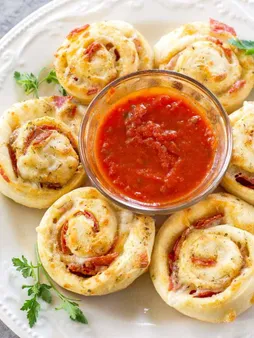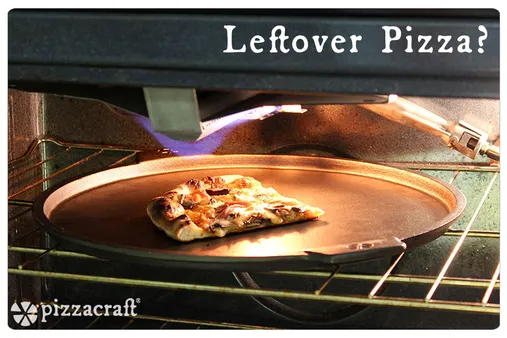Table of Contents
Making pizza at home can be a fun and rewarding experience, but getting that perfect crispy crust can be tricky. The key to a delicious pizza lies in the right temperature. You might be wondering, "What's the best pizza temperature?" While there's no one-size-fits-all answer, understanding the ideal temperature range and how it affects your pizza is crucial. At tauhuichiban, we're passionate about helping you create the best pizza possible, and in this article, we'll delve into the world of pizza temperatures to guide you towards achieving a crispy, flavorful masterpiece.
Pizza Type | Ideal Oven Temperature (°F) | Cooking Time |
|---|---|---|
Thin-crust (Neapolitan) | 900°F | 90 seconds |
Deep Dish | 400°F | 20-28 minutes |
Home Oven (Conventional) | 500°F | 10-15 minutes |
Home Oven (Convection) | 450-500°F | 8-12 minutes |
Pizza Stone | 500°F | 10-15 minutes |
Breville Pizzaiolo | 750°F | 3-5 minutes |

Unlock The Secret: Best Pizza Temperature For Perfect Crust
Finding the Best Pizza Temperature at Home
Why Temperature Matters for Your Pizza
Okay, so you're ready to make pizza at home! That's awesome! But before you crank up the oven to its highest setting, let's talk about why temperature is so important for your pizza. You see, it's all about the crust. A scorching hot oven helps create that beautiful golden-brown crust that's crispy on the outside and chewy on the inside. It's like magic! If the oven isn't hot enough, your crust might end up soft and doughy, and nobody wants that, right?
The Magic Number for Home Ovens
Now, you might have heard that those fancy pizza places use crazy high temperatures, like 800 degrees or even hotter! While that's true, most home ovens don't go that high. But don't worry, you can still get amazing results! For most home ovens, the magic number for pizza is around 500 degrees Fahrenheit. This temperature gives your crust a good blast of heat to get nice and crispy without burning it to a crisp.
Pizza Style | Oven Temperature |
|---|---|
Thin Crust | 500-550°F |
Thick Crust | 450-500°F |
Getting to Know Your Oven
Here's the thing about ovens – they can be a little sneaky! Sometimes, the temperature you set isn't always the actual temperature inside. That's why it's a good idea to use an oven thermometer. It's like a secret agent that tells you the real deal inside your oven. Just pop it in there while the oven preheats, and you'll know exactly when it's ready for pizza time!

Finding the Best Pizza Temperature at Home
Mastering Different Pizza Styles with Heat
The Heat is On for Thin Crust Pizzas
When you think of thin crust pizzas, like the ones they make in Italy, you need a super-hot oven. Imagine your oven as a dragon breathing fire! These pizzas cook fast, usually in just a couple of minutes. The secret? A temperature around 900 degrees Fahrenheit. This intense heat makes the crust crispy and bubbly, while the toppings get all melty and delicious. It's like magic happening right before your eyes!
Gentle Heat for Thick Crust Delights
Now, if you're more into those thick, hearty pizza slices that are almost like a pie, you'll want to dial down the heat a bit. Think of it as giving your pizza a warm hug instead of a fiery blast. For these types of pizzas, aim for an oven temperature around 400 degrees Fahrenheit. This slower cooking process lets the dough rise nicely and gives it that soft, chewy texture we all love.
Pizza Style | Ideal Oven Temperature (°F) |
|---|---|
Thin Crust | 900°F |
Thick Crust | 400°F |

Mastering Different Pizza Styles with Heat
Tweaking Temperatures for Your Perfect Pizza
Ever feel like your pizza just isn't turning out the way you want? Maybe it's time to play with the oven temperature! Think of it like Goldilocks trying different porridges – you're looking for that "just right" heat. If your crust is too soft, crank up the heat a bit. If it's too crispy, turn it down a notch. It's all about finding what makes your taste buds dance!
Pizza Style | Suggested Temperature Adjustment |
|---|---|
Thin Crust | "Turn up the dial by 50°F if not crispy enough." |
Thick Crust | "Lower by 50°F if too crunchy." |

Tweaking Temperatures for Your Perfect Pizza
Final Thought
The best pizza temperature is a matter of personal preference and the type of pizza you're making. Whether you're using a home oven, a professional pizza oven, or even a pizza stone, understanding the role of temperature in achieving a crispy crust is essential. Experiment with different temperatures, flour types, and techniques to find your perfect combination for a delicious pizza experience. Remember, the journey to the perfect pizza is an adventure, and with a little practice, you'll be creating mouthwatering pizzas in no time.